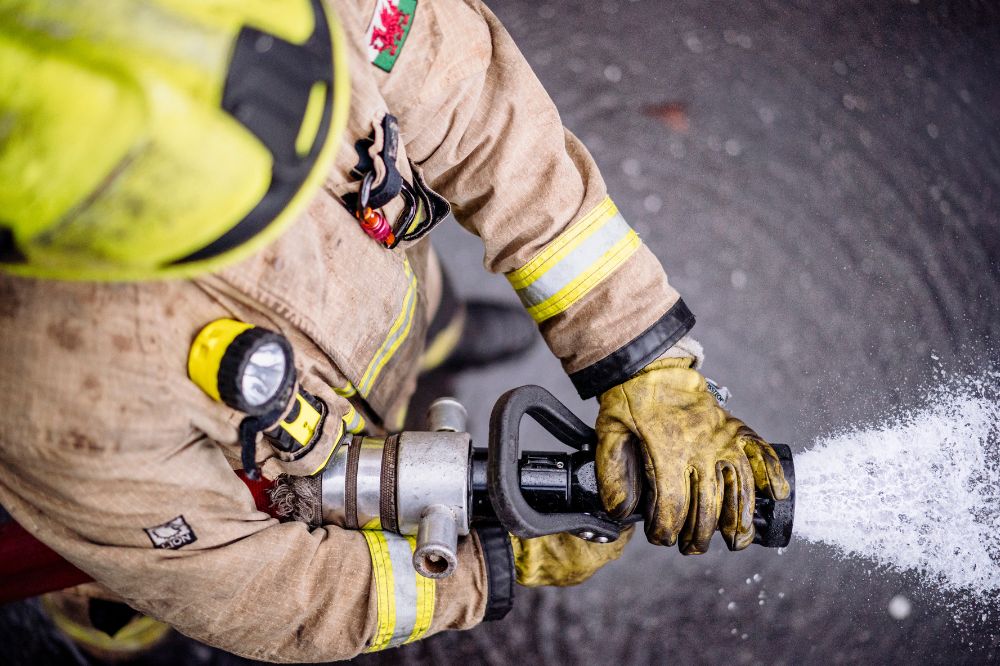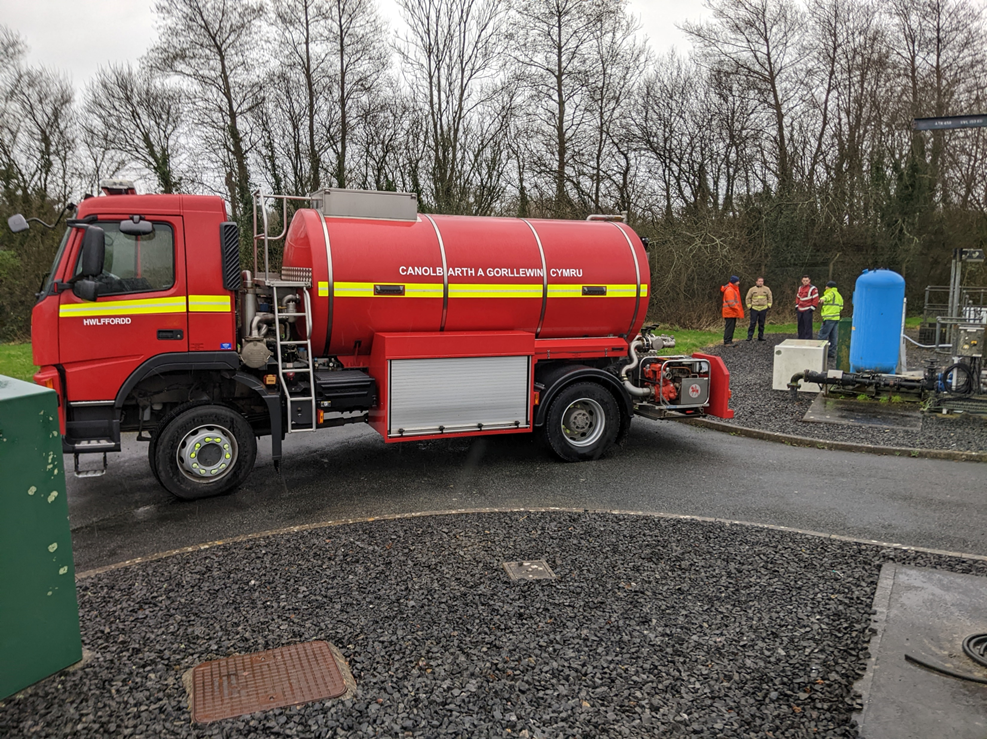Welsh fire service to use wastewater to tackle fires

A Welsh fire and rescue service is leading a pioneering initiative to use treated wastewater to tackle fires.
In a first for Wales and through working in partnership with Dŵr Cymru Welsh Water and Natural Resources Wales, Mid and West Wales Fire and Rescue Service (MAWWFRS) is trialling the use of ultra-violet (UV tertiary) treated effluent water at fire incidents as an alternative to drinking and other water sources.
Fire and Rescue Services use a large amount of water while responding to the variety of incidents they attend, with the average modern fire appliance having an 1,800-litre water capacity.
While water is an essential element of the response work by MAWWFRS crews, the large amount of water required can occasionally cause issues for communities, such as low water pressure and dirty water, depending on the location.
This new initiative, devised and being led by the Service’s Corporate Risk Assurance Manager, Seamus Doyle, will involve using disinfected treated effluent water at incidents attended by MAWWFRS crews.

Imapact
As well as reducing the impact on communities, the process will also align with the Service’s environmental objectives, which includes achieving Net Zero Carbon Status by 2030.
During a period of increased unpredictability on the world’s water supply, due to changing rainfall patterns and frequent droughts, reducing the reliance on clean water is increasingly important.
In addition to reducing the Service’s environmental impact, utilising ultra-violet (UV tertiary) treated effluent water will also enable crews to respond more efficiently to incidents.
Where water supply is limited at an incident, water must be shuttled from various locations which can be up to an hour from the incident, therefore prolonging the incident and delaying response times.
Utilising the UV tertiary treated wastewater sites across Wales would allow crews from the three Fire and Rescue Services to collect water more efficiently and respond quicker.
A spokesperson for Dŵr Cymru Welsh Water said: “We are fully supportive of this initiative to make available where practical treated wastewater effluent that has been through a UV disinfection plant as a source of water for firefighting purposes.
Climate change
“By substituting this volume of water which otherwise would have been taken from the potable water supply it will help in the preservation of our supplies for customers especially in the face of increasing climate change impact on our natural resources.”
A spokesperson for Natural Resources Wales (NRW) said: “A Low-Risk Waste Recovery Operation has been approved and published by NRW allowing the use of UV treated final effluent from Dŵr Cymru Welsh Water permitted Wastewater Treatment Works in emergency firefighting activities by the Fire and Rescue Service.
“This regulatory decision delivers the sustainable management of natural resources by protecting both the natural environment and mains water supplies in an emergency by enabling Fire and Rescue Services across Wales to utilise final waste effluent from relevant facilities.”
Support our Nation today
For the price of a cup of coffee a month you can help us create an independent, not-for-profit, national news service for the people of Wales, by the people of Wales.





If the water is dirty albeit UV sterilised or if sterilisation is incomplete additional damage may occur to otherwise salvageable properties. This may be excluded from any insurance cover. There is also the possibility of chemical contamination which UV will not remove.